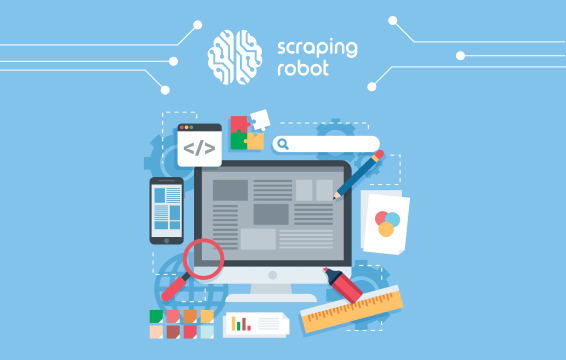How You Can Collect Free Data With Web Scraping Tools

People need data, and in increasingly large quantities nowadays. I don’t know about you, but I like free stuff. In fact, nearly everybody does. But how is the love of free stuff related to the need for data, you may ask? Well, consider two of the major problems businesses encounter in the search for valuable data: the gargantuan effort and cost usually required to acquire the data. It can take a lot of money and many moving parts to get the right set of valuable data for your business.
However, there are several ways and places where these businesses can acquire free data with data sets that are highly organized, localized, and easy to analyze. These free data sets can be just as instrumental in making business decisions as the ones you might spend thousands of dollars to gather. But you can also get free data from just about any website on the internet with web scraping tools. There are several resources that businesses can use to acquire free data, reducing the cost of gathering and organizing data that is stopping many businesses from having a fully-formed data management plan or system.
In this article, we’ll discuss places and resources where you can get free data, why you should and shouldn’t use free data sets, and how to use Scraping Robot’s tools to gather publicly available data. Feel free to use the table of contents to skip to the part that most interests you.
Table of Contents
Why You Should Use Free Web Data
The case for using free data sets for your business needs is relatively straightforward. Now, if you’ve spent thousands of dollars in data-gathering efforts before you could get data that was useful for you, then you are likely wary of using free data. If it is free, then it is not valuable, right? Actually, no.
If the data matches your needs, then can be used to help you and your business reach their most important goals. In fact, most of the data sets that people have probably bought at one time or the other were obtained from these free sources and repackaged to be sold to you by enterprising individuals. Also, most of the free data sets available on the web have already been cataloged, categorized, and organized, saving you the stress and cost of cleaning up data after obtaining it, which is another major obstacle for businesses in the data management game. I’m not saying there’s anything wrong with these methods, but there’s definitely a better (and cheaper) way.
How To Gather Free Data With Web Scraping

So, let’s talk about that “better way.” There has been an increasingly large amount of data available to the public from every form of organization, from the World Health Organization to the United States government. You’ve probably heard about these public data sets, and maybe you’ve even bought them before. What you probably didn’t know is that you can get them for free. These data sets are great because they allow many organizations to provide open, reusable data; everything from market forecasts to census data and taxicab drivers’ earnings, and you can access it all for free.
But you don’t have to rely on these data sets to reach your goals. If you want to access publicly available data from just about anywhere on the internet, you can use web scraping. Most of free data resources do not offer you a way to download specific data sections in a particular data set. Some of these platforms don’t even provide an option to download data sets at all. Meaning you can access the data, use it, and copy it out (which is a herculean task at large volumes), but you can’t download at the click of a button. For that, you need a web data extraction tool, also known as a web scraper.
So, what is scraping? As it turns out, it’s actually something we all do just about every single day. Every time you gather data from a Google search, you are “scraping” the web. When you gather reviews on your product from Amazon and display them on your website, you’re scraping. What web scraping tools or bots do is take this data collection activity to the macro-level. Web scraping bots allow you to collect large volumes of data (the type that’d give you a headache if you even think about collecting it manually), by inputting a URL and a few parameters. Using technologies like APIs and multiple proxies, web scraping bots allow you to scrape multiple websites simultaneously and collect data in real-time.
Web scraping offers a good solution to the problem of how to download data from open sources. When web scraping meets open data sources, what you get is data collection bliss. Using scraping bots to collect data allows you to collect specific sections of data. While the data available on open sources are already organized, you can set new parameters when scraping the data to organize the data in a different format from how it is.
With a web scraping service like Scraping Robot, you can send an unlimited number of scraping requests, and since the data you are using is available for public use, you don’t have to worry about violations or infringing on copyrights. Most open-source platforms have a clearly organized and labeled database, so rather than extracting data from the HTML code as with normal websites, scraping bots can simply go directly to the database and collect the data you need. This saves a lot of time and makes your data collection even faster.
Essentially, when you use web scraping to collect data from open sources, you collect data that has already been gathered, cleaned up, organized, and you reorganize it to fit your needs, all with the click of a few buttons.
Apart from using web scraping, there are also a few other resources you can gather data from for free. I’ll list some of them below
More great resources for free data
Here’s a list of 7 valuable resources you can extract data from on the web for free.
- Google Public Datasets: Google’s cloud hosting service, Google Cloud Platform (GCP), hosts thousands of public data sets that you can explore using the tool BigQuery. These data sets are downloadable, and you can integrate them into your data management system easily.
- Data.gov: The US government made all its data publicly available in 2015. Yes, you have free access to government data. The database contains everything from crime statistics to average household income across neighborhoods in the country.
- Github public datasets: Github does us a huge favor by hosting a library of publicly available data sets, with links that take you directly to the location of these data sets.
- UCI Machine Learning Repository: If you are looking for data sets related to machine learning, the University of California at Irvine is your plug. The repository hosts tons of well organized and clean data ready for immediate use, whatever your need is.
- Kaggle: Kaggle is an open data platform structured as a community hub. They have a vast data library that’s open to the public, and they allow cloud-based collaboration between data enthusiasts.
- Amazon Web Services public datasets: Never one to be outdone, Amazon also has its own library of public data sets on the AWS platform. The library contains everything from data from the 1000 Genome Project to NASA’s satellite imagery data.
- DBPedia: DBPedia is Wikipedia’s answer to the open-source data movement. With DBPedia, they attempt to create a cataloged and organized database that is freely accessible to the public.
These are just a few of the resources where you can get data for free on the web. Check out this Wikipedia article on open data for more ideas on free data sources.
Are There Any Reasons Why You Shouldn’t Use Free Data Sets?

Now that we’ve seen why you need free data, are there any reasons why you should avoid it? Honestly, there aren’t. Using free data is an opportunity that’s too good to pass up if you want to get a leg up on the competition in your data management process. However, you shouldn’t base your entire data management strategy on the use of free data. There are two reasons while you shouldn’t do this.
First, while data is objective, the focus behind gathering the data will influence its structure. This influence might be subtle with no noticeable effect at a small scale, but it is the curse of big data operations that slight variations will be magnified on a large scale. And this could lead to complications when you try to use the data. So you might need to undertake a restructuring of the data to fit it to your needs, possibly requiring more effort than gathering the data by yourself.
The second reason you shouldn’t base your entire data management strategy on free data is that you need custom data, which cannot be collected from pre-made data sets. Custom data is data explicitly gathered to satisfy a particular business need using, say, a web scraper. This type of data will more often than not be the pivotal influence in your business decisions, so you can’t do without it. Essentially, you should create a data management strategy with a base database constructed of data gathered from free resources and then build on your strategy for final data solutions with custom data.
Using Scraping Robot as a Free Web Data Extractor
 If you’re looking for free and affordable data, you found it! The first reason you should use Scraping Robot to find free data is simple: when you sign up on our platform, you get 5,000 free scrapes, allowing you to have plenty of access to free data from nearly any website.
If you’re looking for free and affordable data, you found it! The first reason you should use Scraping Robot to find free data is simple: when you sign up on our platform, you get 5,000 free scrapes, allowing you to have plenty of access to free data from nearly any website.
If you want to implement data with one of our APIs, you can try those for free, too! With these APIs, you can automate your scraping requests and get real-time data for your website or software so you don’t have to manually input scraping requests. And, you can send an unlimited number of requests simultaneously. You have no obligation to continue after using your free scrapes, but if you decide to, every subsequent scrape costs only $0.0018 (which still sounds like “free” to me).
Let’s get started!
Conclusion
There are so many ways to access free data on the internet. Web scraping with Scraping Robot can help you get this data from just about any website in the world, but you can also access free data sets for your personal and professional goals. If you’re a business owner, that means one thing for you: you’ll progressively spend less on acquiring data so you can focus on using data effectively, instead of wasting time trying to figure out how to collect it. Good news, am I right?
The information contained within this article, including information posted by official staff, guest-submitted material, message board postings, or other third-party material is presented solely for the purposes of education and furtherance of the knowledge of the reader. All trademarks used in this publication are hereby acknowledged as the property of their respective owners.
